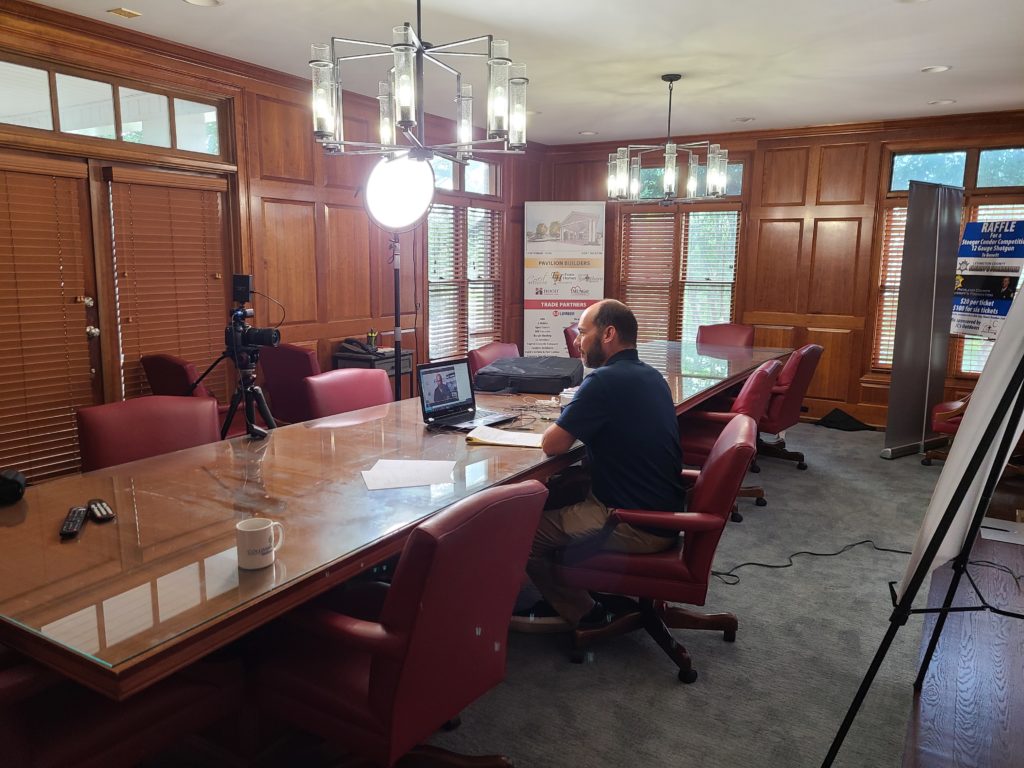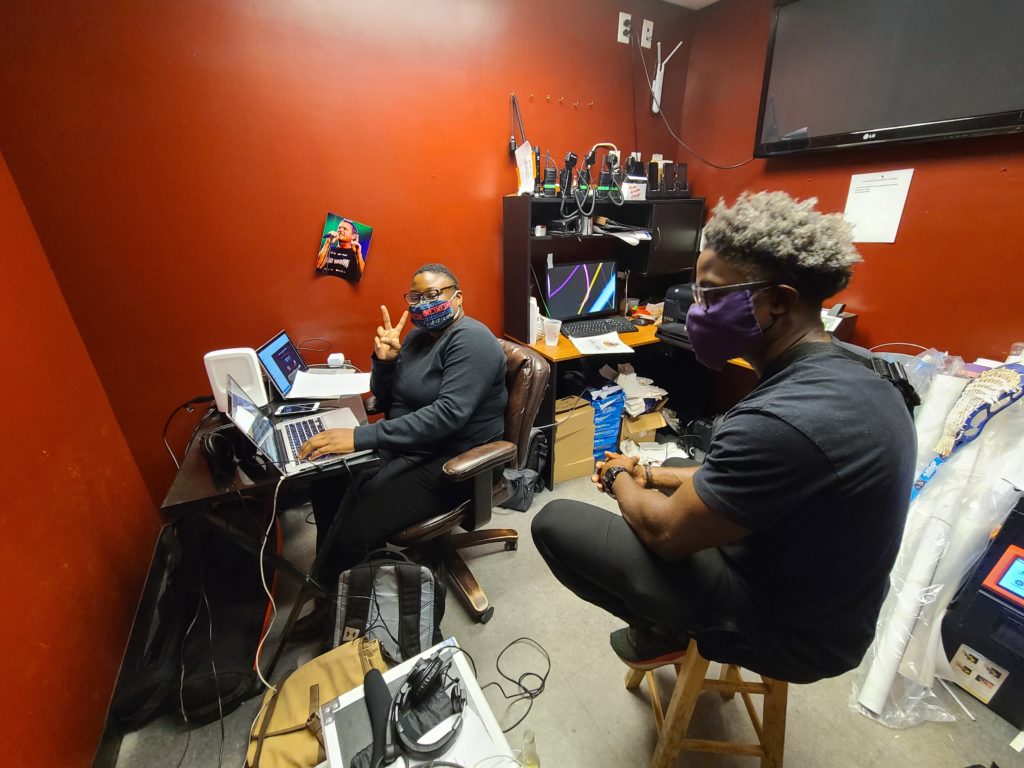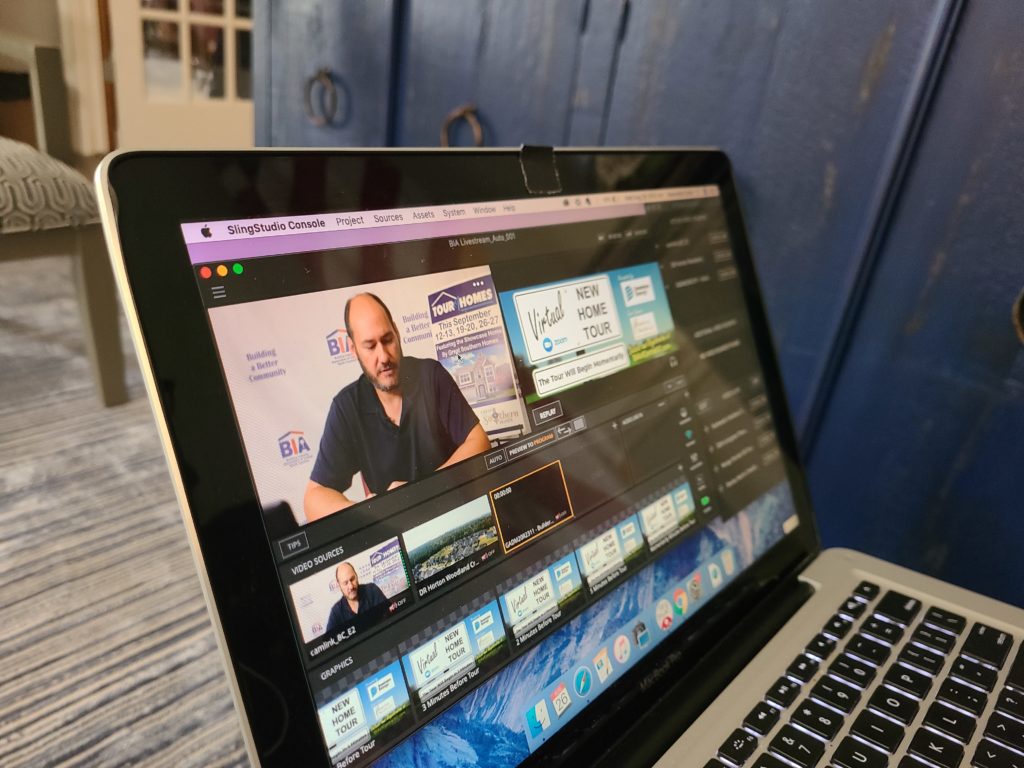Virtual events are easy, you can just turn on your webcam and point it in the direction of the action, right? The quick answer is yes, you can absolutely do that. But is that going to serve you or those attending your virtual event well? Probably not. Most everyone is doing some form of virtual event right now – from big company-wide meetings to small inter-office presentations. But not everyone hosting these virtual events is doing it with the best equipment for their specific need. We know that livestreaming is a new concept to many people and it really is easy to get overwhelmed with the options of what can be done and how it can be done and what really needs to be done. So we’ve put together a quick 3-step checklist to make sure you have everything you need to livestream your next event successfully.
Step 1 – Audio
One of the most important things in a livestream is audio. A majority of the time, the important information you want your audience to know is spoken. Without good audio quality, your audience could miss vital information. This could be due to a number of things – audio cutting in and out (we’ve all been there); someone speaks so loudly its just a loud noise that runs all the words together; someone speaks so quietly its barely just a whisper; the world’s loudest leaf blower is being used right outside the window and it’s drowning out your speaker. These are just some of the more common things that can go wrong. A lot of these issues are easily fixed with a little bit of planning.
- First, think of the type of microphone you’re going to need and how many. Are you having just one speaker or many? Are they going to be stationary at a podium or will they move around while they talk? Once you know how many microphones you need and whether you need a hard-wired microphone or a wireless lavalier microphone you can start looking at other audio inputs you’ll need for your stream.
- Second, think of your location. Are you indoors or outside? Is there usually a lot of white noise that you’d like to minimize? If you’re outside where there’s a chance of wind, you’ll want a windscreen on your microphone to cut down on the extra noise that can be created as wind blows over the top of your microphone. You won’t have to deal with wind inside (unless you’re livestreaming from a wind tunnel), but if the air or heat kicks on in the middle of your livestream, your audience will probably hear it, so you’ll want to find a solution for that problem before it arises.
- Third, think of any video you’d like to show to your audience. Do you have the necessary outputs on the device you’re playing the video on to get the audio clearly into your stream? This video is important enough to show it to your audience, so make sure that they hear the message loud and clear by double checking that you have all the right inputs.


Step 2 – Video
Once you’ve got your audio set up, now it’s time to focus on your video. And by video, we mean pre-recorded video you’d like to play as well as any speakers that are presenting during your livestream. It’s important to have your speakers well-lit for a livestream, but it’s also just as important to have them take up as much space in the screen as is necessary – no more and no less. You’ve taken all this time to set up your audio well, let’s take a few minutes to make sure your video is set up well.
- First, think of what the lighting looks like where your speaker will be during the livestream. It’s easy to look at someone in person and think the lighting looks fine, but that’s because our eyes automatically adjust to the lighting for us. We have to do that for the camera in order to do a livestream. The camera doesn’t know what to focus on or what anything should look like, so you need to make sure your speaker is well lit so they aren’t a dark blur on your livestream.
- Second, think about how you want to frame your speaker. Do they gesture a lot or are they going to be moving around while they talk? Make sure to put only what you want your audience to see in the frame – too much extra movement in the frame could be distracting for some of your viewers. But not being able to see a speaker as they gesture or move around could really take away from what your speaker is saying.


Step 3 – Stream
Taking all of this time to set up your audio and video well is a moot point if you don’t ensure you have the right streaming capabilities. Streaming services seem to have popped up everywhere overnight. And since you’ve made sure to set up your audio and video right, it only makes sense that you’re sure to use the right streaming setup as well.
- First, think about who is your audience. Are you trying to reach a specific group of people within your organization? A password-protected stream is the best option for you in this case. But what if you’re trying to reach anyone who might be interested in what you have to say, like potential clients, investors, or employees? Using a password-protected livestream makes it more difficult for a more general audience to view the stream.
- Second, think about how you want to archive the stream. Some streaming services allow anyone in your audience to record your stream. Others only allow you, the presenter or host, to record it. Still others don’t have any recording capabilities. Decide how you’d like to revisit this content at a later date, as well as how and if you’d like your audience to do so.
- Third, think about how you are allowing your audience to interact within the livestream. Do you need someone monitoring the stream to facilitate questions to your presenter or host? How is your audience interacting with each other? Be sure you know how you’d like discussion to happen, if at all, during your livestream.


We can make your virtual event even easier!
If you’re now thinking that you’re in a little over your head, we’ve got you covered. We have the equipment and the experience necessary to make all of your virtual events easier for you. Sure, there are a lot of companies out there with that same claim. How are we different from them? For starters, we’ve been livestreaming since before it was such a part of everyday life. We started livestreaming weddings through our sister brand, Cinema Couture, in 2010. Since then, we have been growing our knowledge and expertise for livestreaming during the last decade. In addition to our years of experience, we work with some of the most versatile professionals. Our photographers are also editors, and they have experience in lighting design and audio engineering as well. We use our Sling Studio to stream multi-camera events seamlessly on so many different platforms.
Since our start with weddings, we’ve successfully livestreamed countless other events. From weddings to corporate meetings to concerts, we have a proven record of accomplishing our clients’ goals. Virtual events are becoming an essential aspect of doing business now. Doing livestreams successfully now has the potential to benefit your company in countless ways. You may want to livestream your own events, but until you’re ready, let us help you. Contact us today to see how we can make your next virtual event a success!


Pingback: Thank you for a hectic 2020-a year of growth - As Told By